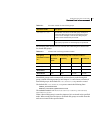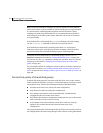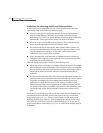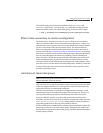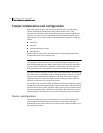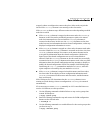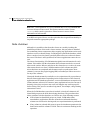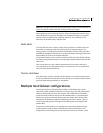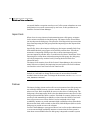
411Administering cluster functionality
Cluster initialization and configuration
During cluster reconfiguration, VxVM suspends I/O to shared disks. I/O resumes
when the reconfiguration completes. Applications may appear to freeze for a
short time during reconfiguration.
If other operations, such as VxVM operations or recoveries, are in progress,
cluster reconfiguration can be delayed until those operations have completed.
Volume reconfigurations (see “Volume reconfiguration” on page 413) do not
take place at the same time as cluster reconfigurations. Depending on the
circumstances, an operation may be held up and restarted later. In most cases,
cluster reconfiguration takes precedence. However, if the volume
reconfiguration is in the commit stage, it completes first.
For more information on cluster reconfiguration, see “vxclustadm utility” on
page 411.
vxclustadm utility
The vxclustadm command provides an interface to the cluster functionality of
VxVM when VCS or HP Serviceguard is used as the cluster monitor. It is also
called during cluster startup and shutdown.
The
startnode keyword to vxclustadm starts cluster functionality on a cluster
node by passing cluster configuration information to the VxVM kernel. In
response to this command, the kernel and the VxVM configuration daemon,
vxconfigd, perform initialization.
The
stopnode keyword stops cluster functionality on a node. It waits for all
outstanding I/O to complete and for all applications to close shared volumes.
The abortnode keyword terminates cluster activity on a node. It does not wait
for outstanding I/O to complete nor for applications to close shared volumes.
The reinit keyword allows nodes to be added to or removed from a cluster
without stopping the cluster. Before running this command, the cluster
configuration file must have been updated with information about the
supported nodes in the cluster.
The
nidmap keyword prints a table showing the mapping between CVM node IDs
in VxVM’s cluster-support subsystem and node IDs in the cluster monitor. It
also prints the state of the node in the cluster.
The
nodestate keyword reports the state of a cluster node and also the reason
for the last abort of the node as shown in this example:
# /etc/vx/bin/vxclustadm nodestate
state: out of cluster
reason: user initiated stop
The various reasons that may be given are shown in Table 13-5.



